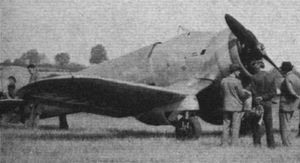
The Short Springbok was a two-seat, all-metal reconnaissance biplane produced for the British Air Ministry in the 1920s. All together six aircraft of the Springbok design were built but none entered service with the armed forces.

The Gloster F.5/34 was a British fighter of the 1930s. It was a single-seat, single-engine monoplane of all-metal cantilever construction; the undercarriage was of the tailwheel type with retractable main wheels.
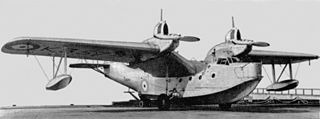
The Short R.24/31 was a British twin-engined, high-wing cantilever gull winged monoplane flying-boat designed and built by Short to Air Ministry specification R.24/31 for a "General Purpose Open Sea Patrol Flying Boat". The contract also specified the use of the experimental Rolls-Royce Goshawk engine. The Saunders-Roe London and the Supermarine Stranraer competed successfully for this contract.
The Hawker P.V.3 was a British single-engined biplane fighter prototype of the 1930s. Only a single example was built, the Gloster Gladiator being selected instead to fulfill the requirement to which it was designed.

The Bristol Type 72 Racer was a British racing monoplane designed by Wilfrid Thomas Reid and built by the Bristol Aeroplane Company at Filton, England.

The Bristol Type 123 was a single-seat, single-engine biplane fighter built to a United Kingdom Air Ministry specification for a four-gun fighter in the early 1930s. Only one was built.

The Bristol Type 146 was a British single-seat, eight-gun fighter monoplane prototype built to a mid-1930s Air Ministry contract. Powered by a radial engine, it was outclassed by Merlin-engined fighters and only one was built.

The Bristol Type 148 was a two-seat, single-engine low-wing monoplane built in 1937 to an Air Ministry specification for an army cooperation aircraft. It lost in the competition to the Westland Lysander and did not progress past the two prototypes that were built.

The Armstrong Whitworth A.W.19 was a two/three-seat single-engine biplane, built as a general-purpose military aircraft in the mid-1930s. A newer, monoplane aircraft was preferred and only one A.W.19 was built.
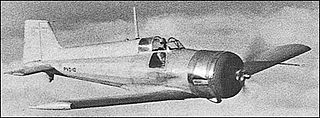
The Vickers Type 279 Venom was a British low-wing monoplane single-seat, single-engined, eight-gun fighter aircraft. It was fast and manoeuvrable but its Bristol Aquila radial engine was underpowered. Together with other designs built to the same specification, which included the Bristol Type 146, Gloster F.5/34, and Martin-Baker MB 2, it was rejected by the Air Ministry and only one Venom was built.

The Vickers Type 151 Jockey was an experimental low-wing monoplane interceptor fighter powered by a radial engine. It was later modified into the Type 171 Jockey II, which had a more powerful engine and detail improvements. Only one was built; it was lost before its development was complete, but the knowledge gained enabled Vickers to produce the more refined Venom.

The Fairey G.4/31 was a British single-engined, two-seat biplane contender for an Air Ministry specification for a multi-role or general purpose aircraft. Unsuccessful, only one was built.
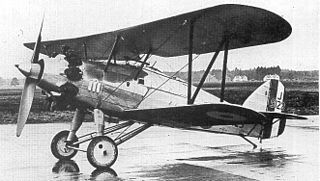
The Hawker F.20/27 was a British fighter design built to an Air Ministry specification for an interceptor in the late 1920s. It was a single-seat biplane powered by a radial engine; the very similar but V-12-engined Hawker Fury development proved superior and only one F.20/27 was built.

The Handley Page H.P.43 was a three-engined biplane bomber-transport built to an Air Ministry specification. It did not fly well and the biplane configuration was out-dated at completion; the only one constructed was later turned into a monoplane and led to the Handley Page H.P.54 Harrow.
The Handley Page H.P.51 was a monoplane conversion of the earlier, unsuccessful biplane bomber-transport aircraft, the Handley Page H.P.43. The Air Ministry ordered the production variant off the drawing board as the Handley Page H.P.54 Harrow bomber.
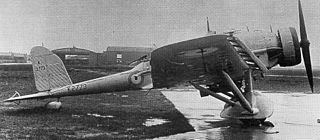
The Handley Page H.P.47 was a British single-engined low-wing monoplane built to an Air Ministry specification for a general-purpose bomber and torpedo bomber aircraft. Only one was built.

The Handley Page H.P.31 was a two-seat single-engined biplane built to a British specification for a carrier-based torpedo bomber and reconnaissance aircraft. After trials, the Blackburn Ripon was preferred, though the Harrow played a significant role in the development of automatic slots.
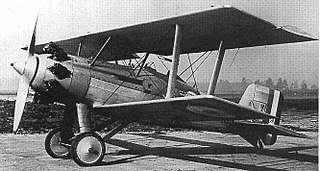
The Boulton & Paul P.33 Partridge was a single seat single-engined biplane fighter designed to an Air Ministry specification. One prototype was ordered and built for trials in 1928, but it was not put into production.

The Parnall Pipit was a single-engined, single-seat naval fighter designed to an Air Ministry specification in 1927. Two prototypes were built but both were destroyed by tail flutter.
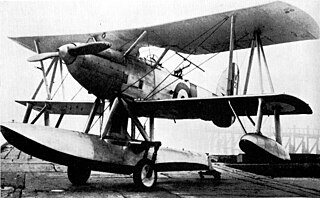
The Short Gurnard was a single-engined two-seat biplane naval fighter, built in the United Kingdom to an Air Ministry specification in 1929. It failed to win production orders and only two flew.
